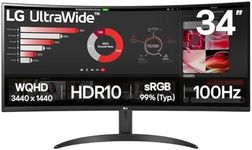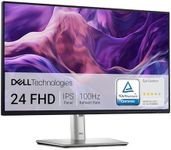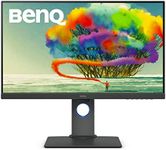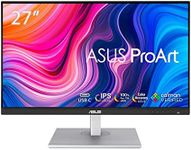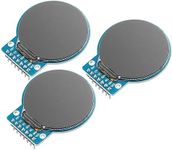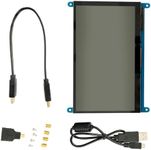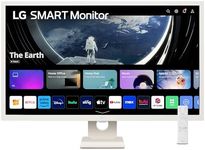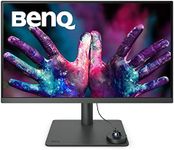Buying Guide for the Best Photo Editing Monitors
Choosing the right monitor for photo editing is crucial because it directly affects how you perceive and work with your images. A good monitor will display colors accurately and provide a clear, detailed view of your photos, which is essential for making precise edits. When selecting a monitor, consider the type of photography you do, the level of detail you need, and how much space you have for your setup. Understanding the key specifications will help you make an informed decision that suits your editing needs.ResolutionResolution refers to the number of pixels that make up the display on your monitor. Higher resolution means more pixels, which results in sharper and more detailed images. For photo editing, a higher resolution is generally better because it allows you to see finer details in your images. Common resolutions include Full HD (1920x1080), 2K (2560x1440), and 4K (3840x2160). If you work with high-resolution images or need to see intricate details, a 4K monitor might be the best choice. However, if your work is less detail-oriented, a 2K or even Full HD monitor could suffice.
Color AccuracyColor accuracy is how well a monitor can display colors as they are intended to be seen. This is crucial for photo editing because you want the colors on your screen to match the colors in your final output. Look for monitors that cover a wide color gamut, such as sRGB, Adobe RGB, or DCI-P3. Monitors with factory calibration or the ability to be calibrated are ideal. If your work requires precise color matching, such as in print photography, prioritize monitors with high color accuracy and calibration options.
Panel TypeThe panel type of a monitor affects its color reproduction, viewing angles, and response time. The most common types are IPS (In-Plane Switching), TN (Twisted Nematic), and VA (Vertical Alignment). IPS panels are generally preferred for photo editing because they offer the best color accuracy and wide viewing angles, which means colors remain consistent even when viewed from different angles. TN panels are cheaper and have faster response times but poorer color accuracy and viewing angles. VA panels offer good contrast but can have slower response times. For photo editing, an IPS panel is usually the best choice.
Screen SizeScreen size is the diagonal measurement of the monitor's display area. Larger screens provide more workspace and can make it easier to see details in your photos. Common sizes for photo editing monitors range from 24 inches to 32 inches. A larger screen can be beneficial if you work with multiple windows or need to see your images in greater detail. However, consider your desk space and how far you sit from the monitor. A 27-inch monitor is often a good balance between size and usability for most photo editors.
ConnectivityConnectivity refers to the types of ports available on a monitor for connecting to your computer and other devices. Common ports include HDMI, DisplayPort, USB-C, and Thunderbolt. Having multiple connectivity options can be useful if you need to connect different devices or use the monitor with various computers. If you use a laptop with USB-C or Thunderbolt, look for a monitor that supports these connections for easier setup and potentially faster data transfer. Consider your current and future connectivity needs when choosing a monitor.

